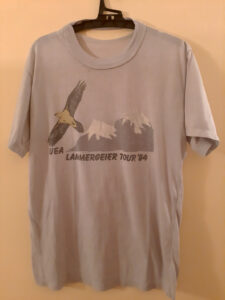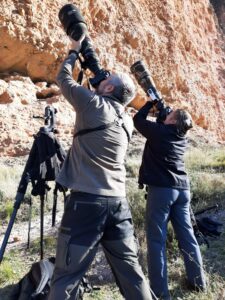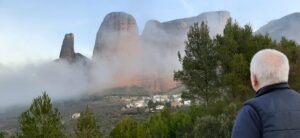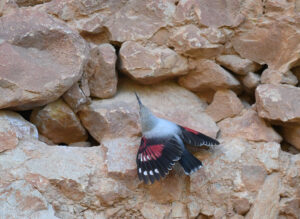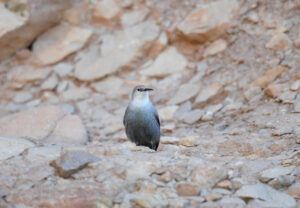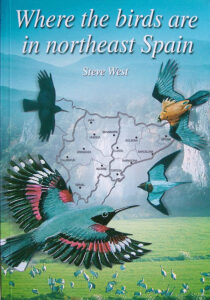UEA Lammergeier tour 1984
UEA Lammergeier Tour 1984
UEA Lammergeier tour t-shirt 1984
It was early April 1984. We drove through France and as we approached the south it was just a little bit like travelling in time. In Britain it was still cold and grey, but in France we saw pink blossoming trees, we heard Chiffchaffs and then screeched to a roadside halt and, paying little heed to the angry shouts of French motorists, we watched a flock of migrating Black Kites heading north.
We reached the Spanish border in the Pyrenees and once past the intimidating border control guards we had a whole new playground full of wonders to explore. John spotted the first Egyptian Vulture from the van, virtually quoting the text from his new Lars Johnson identification guide to convince us that that indeed was what he had seen.
There are blank pages my memory has jumped, but I do remember that we saw a Lammergeier at Riglos, and also at San Juan de la Peña, and that my impression was that we had most of the vast and stunning countryside to ourselves. Why can’t I remember where the first Lammergeier was? Never mind… I have other things to consider, like, what did the Lammergeier mean to me then, and what does it mean now?
For one thing, nowadays I no longer see nor expect to see Lammergeier at Riglos nor, sadly, do I at San Juan de la Peña. That’s a shame, because Riglos and San Juan de la Peña are the most marvellous backdrops to a marvellous bird. It’s a powerful combination. It’s an explosive cocktail, shaken or stirred. Birders have the ability to make a place “theirs” through the memories of the birds they have seen there at some time in their own past. The bird and the place, or the combination of the two, become uniquely personalised. “This is where I saw my first Lammergeier, on a sunny morning in early spring, when the snow still capped the mountains on the horizon”; or “this is where I was a 20 year old on his first ever foreign birding trip – there were so many marvellous things to see and to share with my travel mates, who were just as impressionable as I was”.
I have to say that I remember San Juan de la Peña more for the Short-toed Eagles than the Lammergeier. As we watched them grappling talons and plummeting head over heels towards the valley floor way below it was the feeling of spring; the fresh sap rising through our veins, warming our extremities to our finger tips and stimulating parts of us we didn’t know could be stimulated until that moment (eh, think clean!).
I can be saddened by the loss of that youth if I let it happen; melancholy lingers in the trail of the Lammergeiers where I first saw them almost 40 years ago; there are too many thoughts and impulses which can blemish my memory of those moments. But change is inevitable. Accept that, and also accept that you have an ambitious vision, and very limited means. Don’t be disappointed by that; that’s a fact of life. Instead take heart that you still have something to live for, because living means struggling for something better, always something better. For you, for the birds, for anyone who cares.
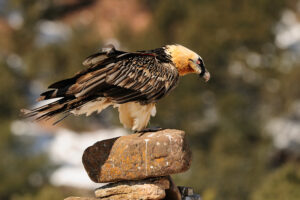
Lammergeier, Gypaetus barbatus. Photo by Chris Schenk
Thankfully, the Lammergeier still thrives in these mountains, in other places maybe, but the bird which lives and flourishes in silence is still here. And now, thanks to the years that have passed, I know where to find another Lammergeier or two when I really need to.
UEA Lammergeier tour t-shirt 1984

